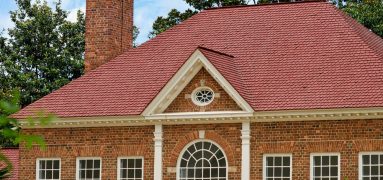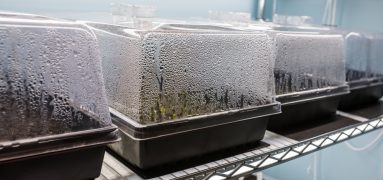Easiest Ways to Regulate Building Temperature

BOLSTER YOUR BMS WITH THESE METHODS
Climate controls and building management systems are the best way to maintain the temperature within a building, but there are other methods that can help. Check out these simple steps that you can take to aid in regulating your building’s climate.
1. Outside Walls
There’s a reason why all the buildings on the Mediterranean are white stucco; due to the physics of light waves, white reflects heat and black absorbs it. Painting your building a light color such as white or yellow will help to keep it cool in the summertime because the sun’s rays will bounce off of it. On the other hand, a building that is painted a dark color such as black or dark blue/red will absorb the sunrays, helping to keep it warm in the winter. Depending on the location of the building, you might want to focus on reflecting heat, on absorbing heat, or possibly doing both.
Additionally, the materials that the walls are made of can help naturally regulate the indoor temperature. Walls made out of brick or stone will keep a building cooler, while walls made of wood will keep a building warmer. Again, the materials will depend on the building’s geography.
2. Roofing Materials
Just like with the outside walls, the color and material of your roof have a big impact on your building’s temperature. A white roof will reflect sunlight, while a dark roof will absorb it. You may want a darker roof that absorbs heat if you live somewhere that gets a lot of snow.
There are many types of roofs that can help regulate a building's temperature. Roofs that are specially designed to reflect heat are called “cool roofs”. Utilizing cool roofing materials can reduce the need for air conditioning and help you save on energy bills.
Additionally, green roofs are growing in popularity and are proven to have significant impacts on a building’s temperature. Green roofs are gardens and green spaces that lay atop a building. They cool down the surrounding air by up to 40°F, and are proven to reduce the amount of energy needed to heat/cool a building.
3. Landscaping
Landscaping is great for regulating temperature everywhere, not just on the roof. The landscaping around a building has a big impact on the temperature inside. Strategically placed trees and shrubs can protect your building from the sun and wind, which will help regulate the temperature. Planting deciduous trees, whose leaves will shade in the summer and fall off to allow sunlight to reach the building in the winter, is a good tactic. Planting evergreen trees and shrubs to act as a wind barrier will help prevent cold winds from hitting your building.
4. Parking Lot Considerations
One of the biggest emitters of heat is large parking lots. Asphalt absorbs and releases heat at an elevated level throughout the day, and increases buildings’ needs for air conditioning. To combat these “heat islands,” as parking lots and other asphalt-covered urban areas are called, you can plant trees to provide shade and cool the air down. Many parking lots have some sort of trees planted alongside or within them, but these trees are usually small, unhealthy, and under-cared for. Be sure to plant native trees and provide them with enough space to grow and prosper.
5. Energy Efficiency
Another way to regulate the temperature within a building is to reduce the amount of energy being used. Appliances and lights give off heat as they use energy, so installing energy-efficient products can help keep the inside of a building cool. Incandescent and halogen light bulbs give off a lot of heat (and suck up a lot of energy), so using LED bulbs is a great way to keep the temperature down.
6. Reinforce Leaks
Doors and windows allow for 25% of a building's energy loss. To prevent your building from leaking air, either heated or cooled, you can reinforce your windows and doors. Be sure that there are no gaps between windows/doors and the wall, and place weatherproofing strips if you do notice light or air coming through.
Another place where unwanted temperatures can creep in is through the floor. To prevent air leakage, you can install a carpet or place a rug—both are great at insulating.
7. And, finally; The best way to regulate a building’s temperature is to install a fully integrated building management system that includes climate and lighting controls. When you can work together with your entire building, it’s easy to control the climate, no matter what season it is. TC Control Group's BMS solutions maintain temperature, humidity, lighting, and energy usage to give you a comprehensive understanding of how your building functions and how to keep it the right temperature. Contact our experts to get started on your building today.



